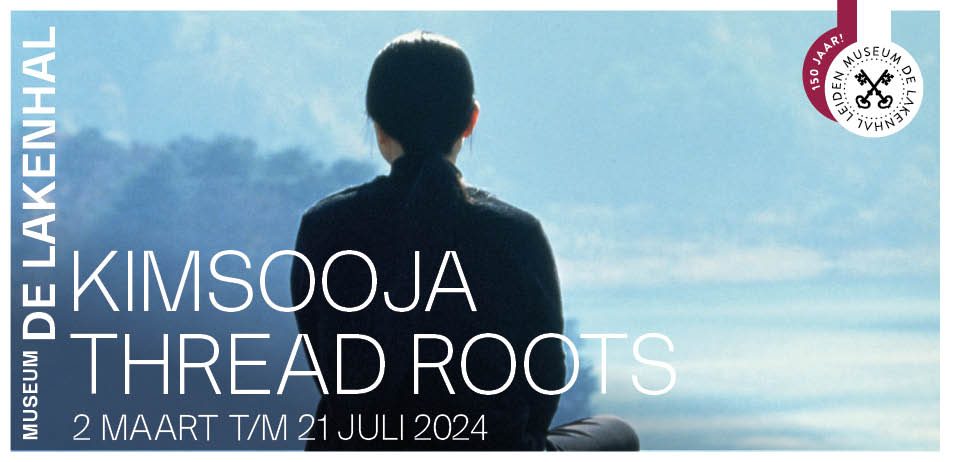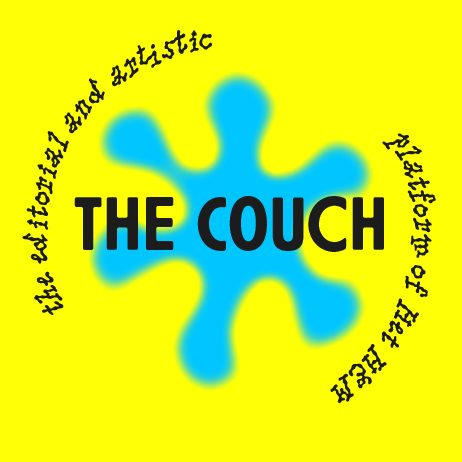The mountains are watching us
An interview with Lois Patiño
This month Lois Patiño’s latest short film Farj had its world premiere at the International Film Festival of Rotterdam. In Farj we see silhouettes appear and disappear in a desert-like landscape. Like in most of his films, Patiño experiments with our experience of distance, humans versus nature, and time. His unique way of looking at the world is hard to describe, but intriguing. There is one constant in his films: the image of the landscape is always a central element.
What fascinates you about landscapes?
The most important thing is that landscapes are alive; and by filming them I try to bring their energy to the screen.
Could you say that you’re trying to tell the stories of the landscapes, and that they are your main character?
I indeed try to tell the stories that are inclosed in these landscapes. One of the most interesting definitions of landscapes I’ve heard is: ‘a landscape is a strata of time, condensed in one image.’ Different humans, cultures and civilizations go through a landscape, while the space itself remains. The landscape becomes a condensation of time. I’m trying to speak from the memory of this space, and show the energy it has.
Your landscapes sometimes look like a canvas, especially in Mountains in Shadow – do you recognize this comparison of your images with paintings?
One of the explanations of the origin of landscapes as a concept, is that they arose when painters started to paint them. With painters framing the space of nature, a cultural distance appeared. In my films I try to investigate the representation of landscapes in films, and I decided that it was important to use this frame that we know from painters. Also, both of my parents are painters, so probably i’m unconsciously influenced by that.
In my earlier work you can see references to romanticism, and in my later work, like in Mountains in Shadow, I went more towards abstract expressionism and contemporary painters. In this film I used a very long lens, which makes the space really flat. I wanted to create an image with no depth, so the cinema screen would look like a canvas. The images are more about the textures, and with this flatness I wanted to give the landscape a tactile feeling.
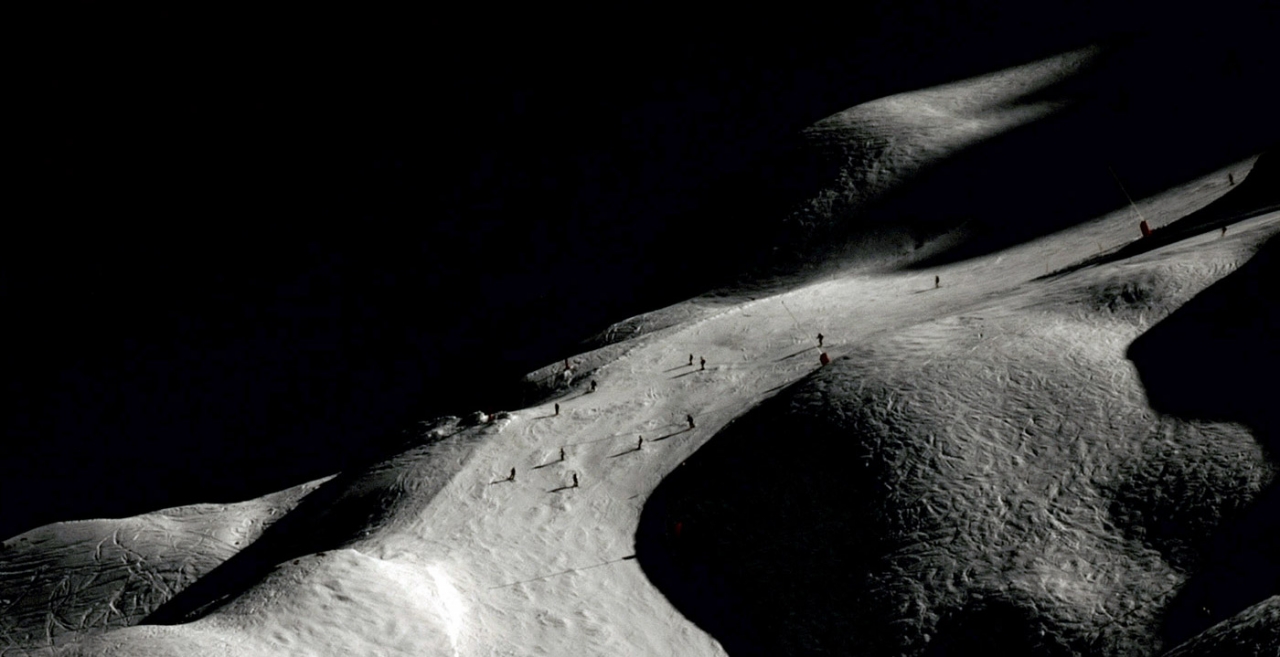
You were talking about a landscape as a condensation of time. Your latest short film, Fajr, almost feels like it happens outside of time as we know it.
That’s exactly the idea. I’m trying to explore the different ways that you can experience time, and merge them in one image. In Fajr, people stand almost paralyzed in a landscape where nature is moving. So the time in nature moving, while I’m trying to show a different sense of time in the paralyzed characters: their inner time.
Their inner time?
I’m trying to evoke a transcendental experience of time. I want to expand the time of the instant. It’s like the experience of some sort of sublime – the experience of a mysterious greatness within your own consciousness, where time flows different from the time outside yourself. You connect in one instant with a landscape or something in a landscape that hits you, and that instant expands. The paralyzed people in Fajr, Night without Distance and Strata Of The Image are static, but also ecstatic.
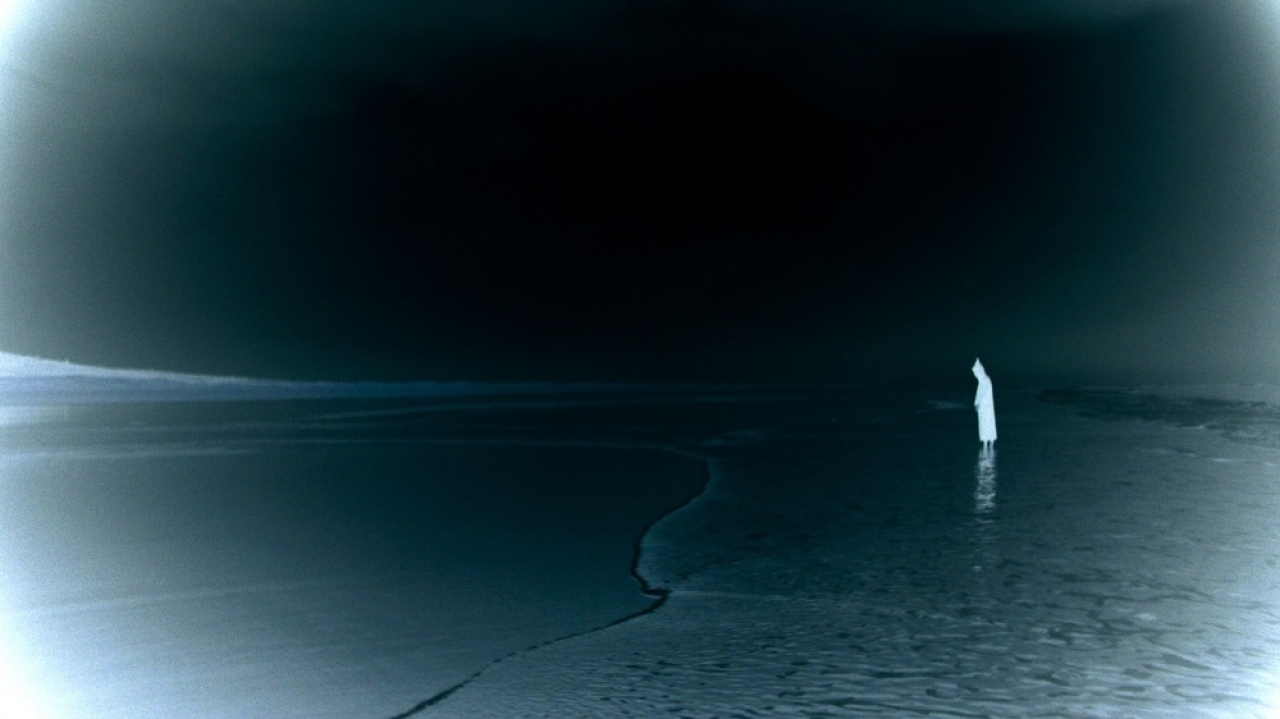
I like this idea of the expanding of the instant. Do you manage to perceive time in this way in your daily life? To expand your own inner time?
The inner time is something I’ve found interesting since I was a teenager. The theories of Henri Bergson were really important for me then, he was the first one who separated the inner time from the external time. Nowadays I’m trying to be more sensitive and conscious of the possibility of an instant expanding. I try to have it more and more, because I believe that eternity is there.
How do you get to these expanding instants?
See the beautiful things in daily life and be happy with the details. It’s working, but you have to be active to be conscious of it and really feel it.
Are you teaching your audiences to be more focused on the details? Your work reminds me of that of James Benning: long static shots and plenty of time for viewers to get acquainted with an image.
An image is not only what you see at the surface; an image is open, polysemic, and there are a lot of things you can find in there. You need time to go deeper and to find the secret that the image hides. The image works if you can see what’s hidden back there. James Benning is the master of this.
Also I want the viewer to be able to perceive the details. That’s why I don’t move the camera: I don’t want to contaminate the subtle movements of nature with my own camera movements.
You also keep a certain distance with your camera. The humans in your films are mostly small and we never see their faces. Why is that?
My movies are not about these humans, but they’re there as a reference. Like in a painting of Caspar David Friedrich where they give a reference of scale. I also need the tension it produces to have someone there in an image. A human figure makes it possible for the viewer to project; it gives them a reference of scale and time related to the human.
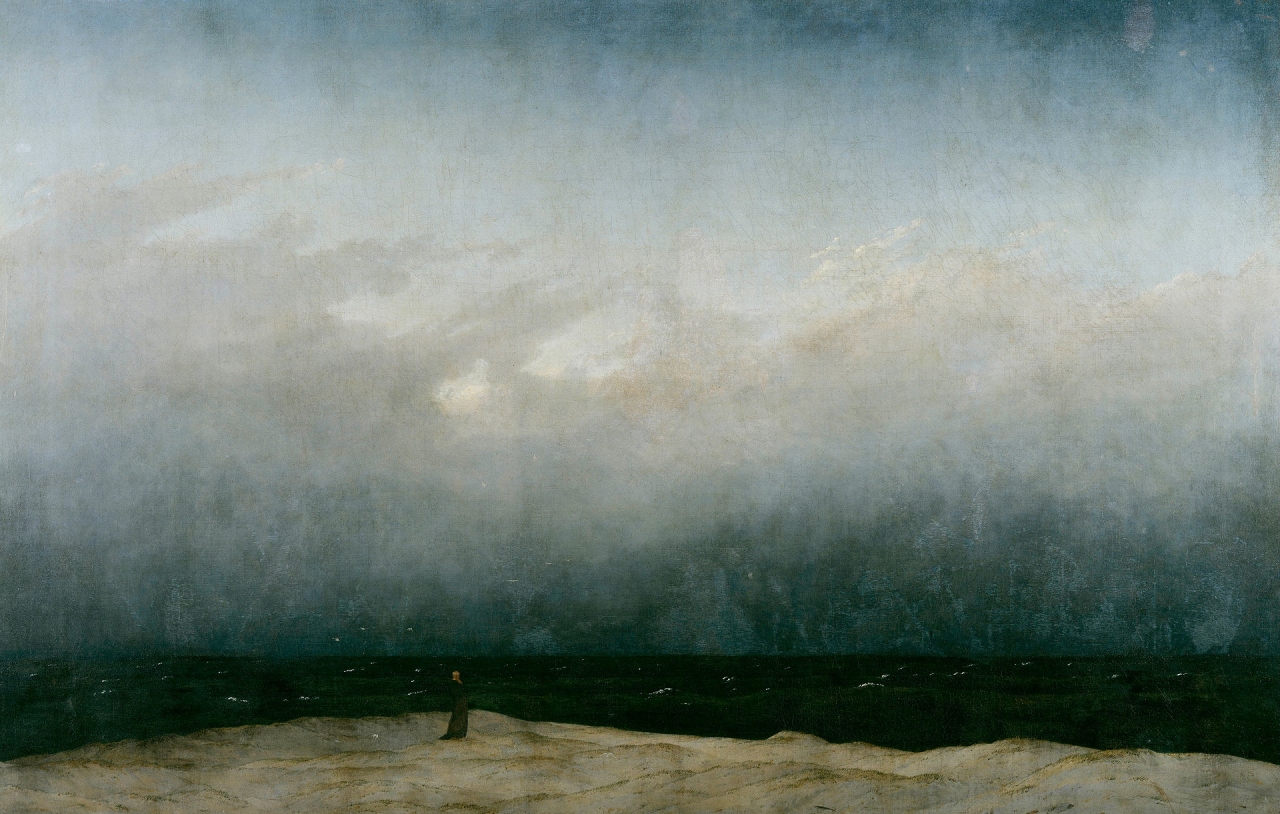
The humans also look very insignificant compared to the majestic and almost dangerous nature. Is that for a reason?
Yes, and in some of my works people even disappear in the landscape. I think people are just a part of nature, just like a stone or a tree. And this feeling that disappearing in a landscape evokes, is somehow also connected with the transcendental: the spiritual feeling of being part of the whole.
Humans in general tend to find themselves very important on this planet. You believe we’re just a part of the whole. Do you find this thought comforting?
Absolutely.
I even try to break with the anthropocentric idea by using a certain point of view with my camera. In most of my works the camera is very high; it’s not a human point of view. I realized this when I was shooting Mountain in Shadow – it is the mountain looking at people moving through his body. In that way I not only use a physical distance – because the humans are so far away – but also a spiritual distance. It’s not a human that is watching.
Us humans being small and insignificant in this immense body of energy as you describe nature: Isn’t there also a scary element to that?
No. I use the danger and mystery that lies in nature to evoke an experience of the sublime in the viewer. I’m looking for these really powerful moments to push the viewer to see all the details and get some kind of transcendental experience. Heidegger says that something is art if it makes the truth appear from reality. That’s exactly what I’m trying to do in all my work: use a poetic approach to reality to try to emerge some truth. That’s what’s really important for me, and what I will be trying to do the rest of my life.
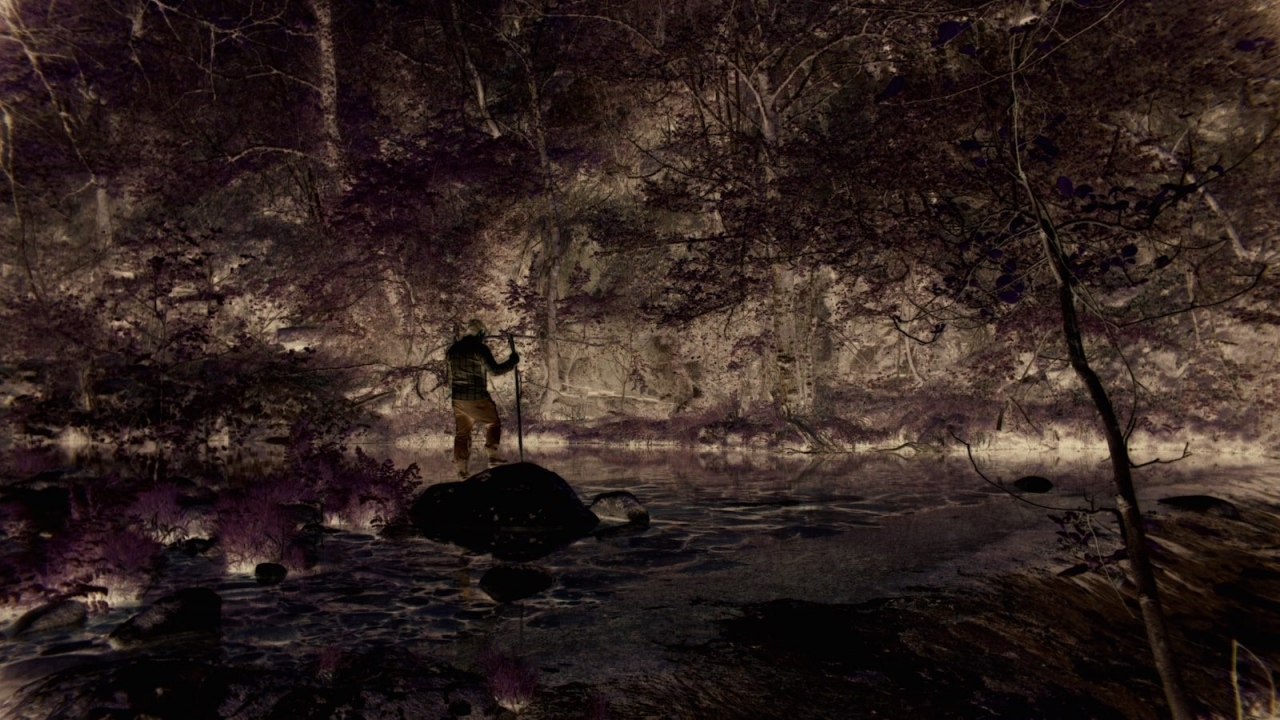
Video of Mountain in shadowMore info about Lois Patiño: www.loispatino.com

